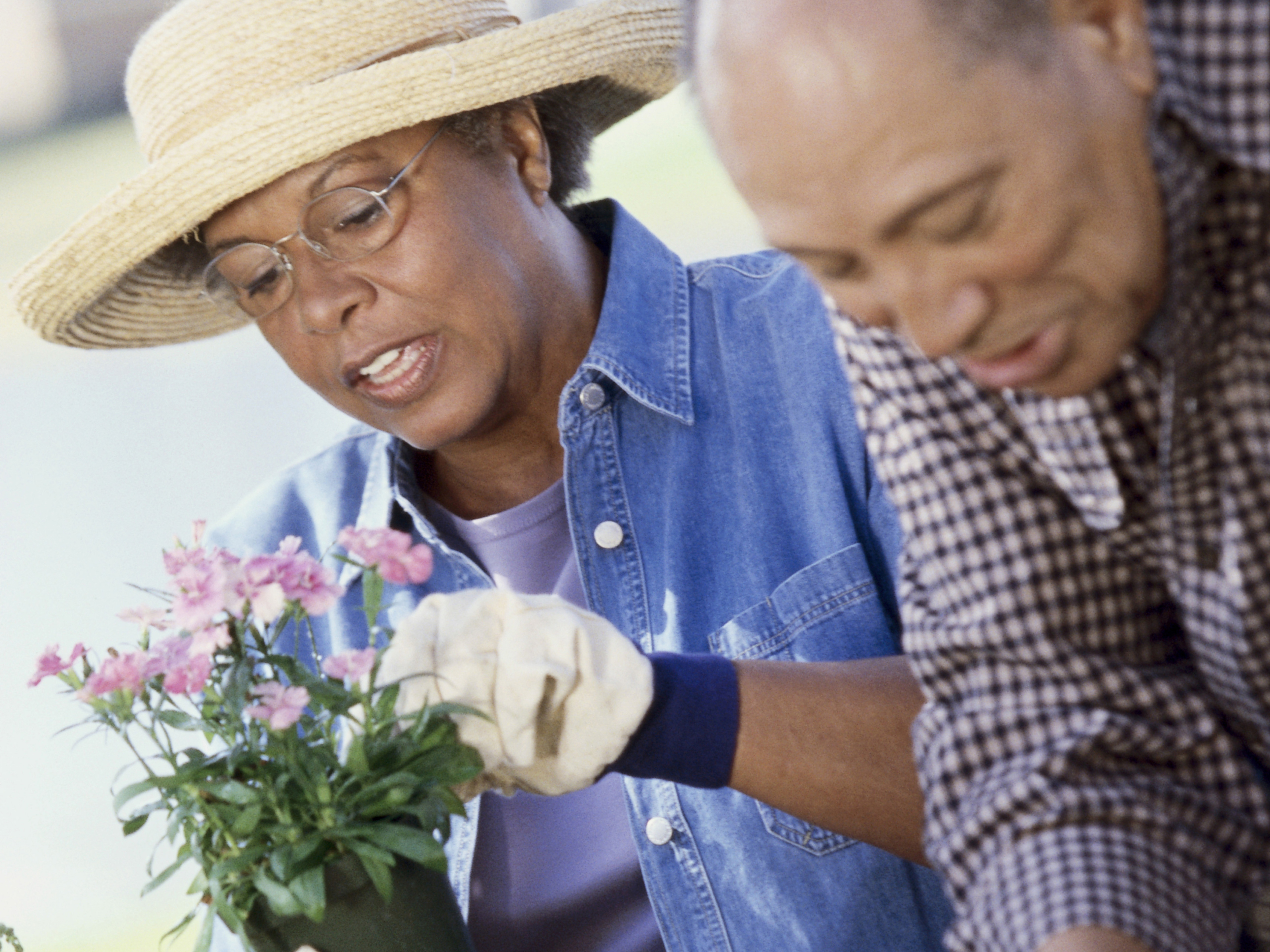Gardening as Exercise

by Clare Ross, CRNP
Working in the garden on a pleasant day is certainly good for the soul, but how about your body ─ does it count as exercise?
Yes, indeed. Gardening is similar to other moderate to strenuous forms of exercise like walking and bicycling. Gardening works all the major muscle groups: legs, buttocks, arms, shoulders, neck, back and abdomen. Tasks that use these muscles build strength and burn calories.
Digging, lifting bags of mulch and pushing wheelbarrows all provide strength training similar to weight lifting, which leads to healthier bones and joints. Yet there is minimal jarring and stress on the body, unlike aerobics or jogging.
Gardening can help keep you limber since there can be a great deal of stretching involved, like reaching for weeds or branches, bending to plant or extending a rake.
It takes at least 30 minutes of exercise several days a week to really receive any health benefits from gardening. However, you can break that time up into shorter active periods throughout the day. So you can do a little weeding in the cool of the morning and go back out to the garden in the evening to prune and trim.
Gardening can also help you burn calories and lose weight. The number of calories burned depends on several factors, including your size and the task you are performing, but the National Gardening Magazine provides these examples:
| Activity | Calories Burned Per 30 Mins.* |
| Watering | 60 |
| Planting seedlings | 160 |
| Weeding | 180 |
| Trimming shrubs (manual tools) | 180 |
| Digging & tilling | 200 |
| Gardening with heavy power tools | 240 |
* Based on a 180-pound person. Lighter people generally burn fewer calories, and heavier people typically burn more.
If you’re new to gardening, start slowly and build up the length of time of your workouts. Avoid injuries by using your legs to lift heavy loads. Don’t stretch too far to reach awkward shrubs; this will prevent muscle strain. Vary your tasks and your movements and make use of the major muscle groups to get the most benefit. Make sure you incorporate a little stretching before and after gardening and take things slowly on hot days. Drink plenty of water if you are outside for more than 30 minutes. Use gloves and wear long sleeves to prevent cuts and scratches.
After you are done, have a hot shower to soothe your muscles, wash off any possible poison ivy residue, and check for ticks. And as with any other form of exercise, check with your doctor first if you’re not used to strenuous activity.
So go out into your garden, enjoy the lovely spring weather, and get some exercise!

Recommended Posts
Small Doses of Nature Can Lead to Big Health Benefits
By Garth Ashbeck, M.D.
Hop on a Bike to Get Fit, Lose Weight
By José Zarzuela, M.D.



